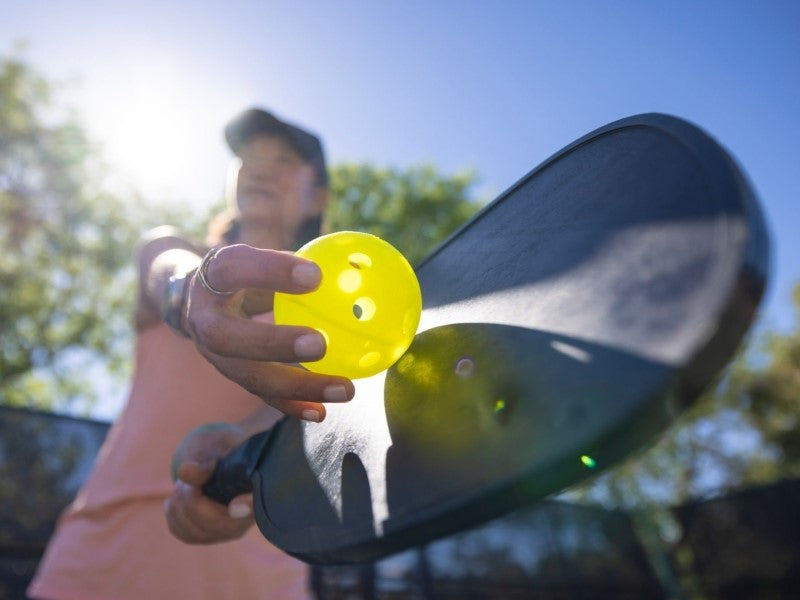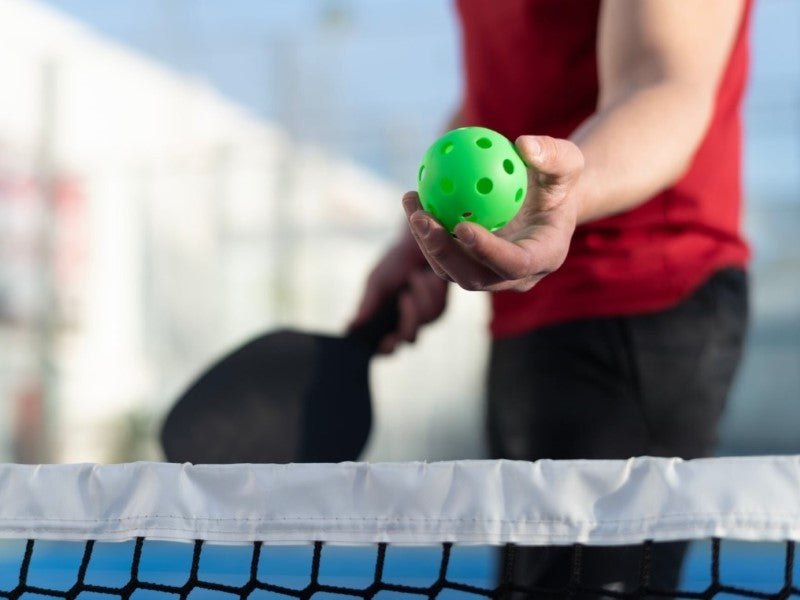Singles pickleball is fast-paced strategic and demanding. While many people start with doubles the singles format offers its own unique challenges and rewards.
What Is Singles Pickleball
Singles pickleball is a one versus one match played on the same-sized court as doubles but with different dynamics. The rules are similar to doubles in terms of scoring and serving but the pace and physical demands are much higher. This makes stamina footwork and precision even more important.
Basic Rules of Singles Pickleball
To play singles correctly you need to understand the core rules. While many overlap with doubles there are some differences in movement scoring and strategy.

1 Scoring System
- Only the server can score points.
- Matches are typically played to 11 points, requiring a 2-point lead to win.
- If the server wins the rally they score a point and switch sides to serve from the opposite side.
- When the receiver wins the rally, they don't score a point but take over as the server.
2 Serving Rules
- The serve must be directed diagonally into the opposite service box.
- The server switches between the right and left service areas depending on whether their score is even or odd.
- There is no second server like in doubles.
3 Court Dimensions and Boundaries
- The court dimensions match those of doubles, measuring 20 feet in width and 44 feet in length.
- Each player must cover the entire court alone including the non-volley zone (kitchen).
- The kitchen rules still apply—you cannot volley while standing inside the kitchen.
Key Differences Between Singles and Doubles
Understanding the differences will help you adapt your game more effectively.
|
Aspect |
Singles |
Doubles |
|
Number of Players |
1 per side |
2 per side |
|
Court Coverage |
Entire court by one player |
Shared coverage between partners |
|
Serve Sequence |
Single-server rotation |
Two servers per team |
|
Rally Style |
Faster and more open |
More dinking and net battles |
|
Movement Demand |
High |
Moderate |
Top Strategies for Singles Pickleball
Winning in singles isn't just about hitting hard shots—it's about using space wisely outlasting your opponent and playing smart angles. Here are the most effective strategies.
1. Serve Deep and Wide
Use your serve to immediately put your opponent under pressure. A deep serve forces your opponent back, giving you more time to prepare for their return, while a wide serve opens up space on the opposite side of the court.
2. Return Deep and Center
When returning, aim deep and toward the center to minimize sharp angles and give yourself time to reset. Avoid short returns—they invite aggressive third-shot drives.
3. Move Immediately After Serving
Unlike doubles where you can rely on your partner in singles you need to recover quickly after serving. Get back near the center of the baseline and stay balanced to react to any return.
4. Hit to the Open Court
Always be aware of where your opponent is and aim for the vacant side. Use your shots to move them laterally and create open space then finish with a strong passing shot or drop shot.
5. Mix Up Your Shots
Don't let your opponent get comfortable. Use a variety of drives drops lobs and spins to keep them guessing and on the move.
Court Positioning Tips for Singles

Unlike doubles where players can specialize singles forces you to master both offensive and defensive positions.
1. Stay Centered
After each shot, move back to the middle of the court behind the baseline—this neutral position maximizes your ability to cover both sides effectively.
2. Anticipate Angles
Be prepared for cross-court shots especially after you serve. Anticipate where your opponent will likely hit and take small adjusting steps.
3. Control the Kitchen Line
While rallies are faster in singles controlling the non-volley zone is still important. If you hit a drop shot or your opponent hits a weak return step in and take control of the kitchen line.
4. Backpedal with Control
When forced back by a lob or deep shot resist the urge to run straight backward. Use side shuffling and maintain balance to avoid falling or hitting an awkward return.
Common Mistakes to Avoid
Even strong doubles players often make errors when switching to singles. Here are a few common mistakes:
-
Standing too close to the baseline after serving
Always recover to a neutral position quickly -
Overcommitting to one side
Stay centered to cover angles -
Using only power shots
Strategy and variety matter more than brute force -
Neglecting footwork
Singles requires constant movement and recovery -
Ignoring short balls
Be ready to move forward for a drop shot or short return
Singles Pickleball Drills
If you’re serious about improving your singles game, try adding these specific drills to your practice routine:
1. Shadow Footwork Drill
Practice moving side to side and front to back without hitting a ball. Focus on balance and recovery.
2. Serve and Recover
Serve then immediately shuffle to the center baseline. Practice recovering quickly to prepare for the return.
3. Cross-Court Pass
Set up targets in the corners and practice driving balls cross-court to simulate passing shots.
4. Drop and Charge
Practice drop shots from the baseline then sprint forward to the kitchen to follow it up.
Is Singles Right for You
Singles pickleball is physically intense but highly rewarding. It’s ideal if you enjoy:
- Covering the entire court
- Playing at a faster pace
- Using strategic ball placement
- Competing one-on-one
If you’re used to doubles singles may be a challenge at first but it’s a great way to improve your fitness footwork and shot variety.
Frequently Asked Questions About Singles Pickleball
1. Is singles pickleball harder than doubles?
Yes, singles pickleball tends to be more physically demanding since you’re responsible for covering the whole court alone. It requires better stamina quicker footwork and more consistent shot placement compared to doubles where you can rely on a partner.
2. Is it okay to use the same paddle for both singles and doubles matches?
Definitely! Most players use the same paddle for both singles and doubles without any issues. However some may prefer a paddle with a bit more power for singles to help with drives and passing shots.
3. Do singles players need to be more fit?
Yes since singles involves more running lateral movement and court coverage fitness plays a major role. While skill and strategy are still essential a higher level of fitness can provide a real advantage.
4. What’s the best way to practice for singles?
Focus on footwork drills target-based hitting and practicing serves and returns. Solo drills like shadow movements and partner-fed rallies are especially useful for improving singles play.
5. Are the court lines different in singles?
No the court size and lines are the same for singles and doubles. However in singles you’ll need to manage the entire width of the court yourself which changes how you move and position.
Final Thoughts
Learning how to play singles pickleball involves more than understanding the rules. It requires mastery of strategy positioning and consistent shot execution. With proper training smart court awareness and a commitment to improving your physical conditioning you can become a well-rounded and confident singles player.
Remember the key principles:
- Know the rules and scoring
- Serve and return deep with intent
- Move efficiently and recover quickly
- Mix up your shots and control space
- Practice with purpose
Step on the court challenge yourself and enjoy the process of mastering this exciting version of the game.








Leave a comment
This site is protected by hCaptcha and the hCaptcha Privacy Policy and Terms of Service apply.